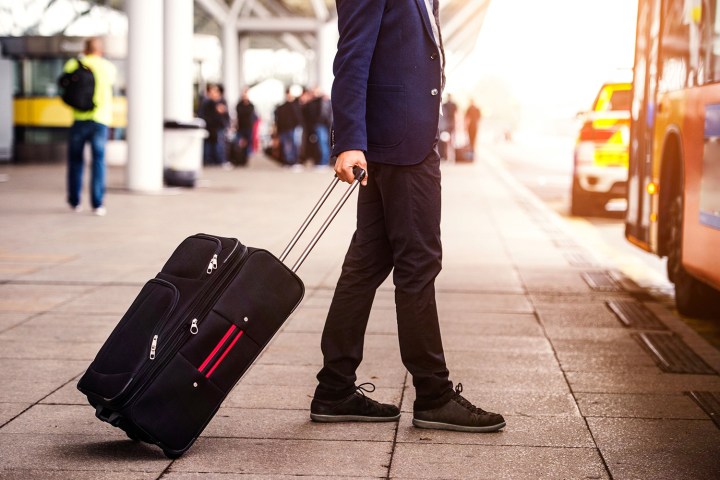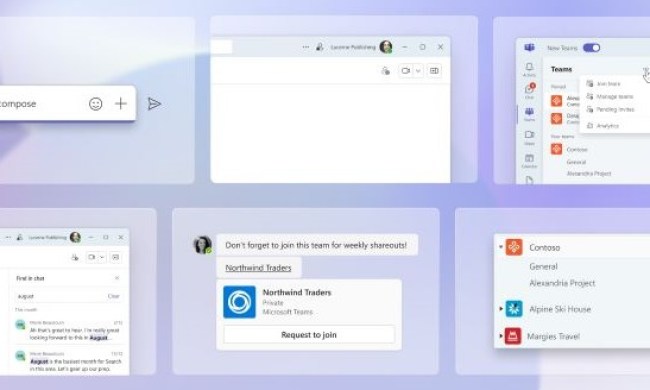
But, what is smart luggage? It’s a label that’s applied broadly to any bags that incorporate technologies such as hot spots, battery chargers, tracking devices, digital scales, and companion mobile apps, as well as features designed to alleviate the stress from traveling, like built-in organizers, collapsible constructions, and even — we kid you not — a motorized scooter.
Are these travel accessories truly the next-generation of travel, or a marketing exercise in developing solutions for a non-existent problem? Samsonite’s CEO, Ramesh Tainwala, told CNN that smart luggage is gimmicky and does not deliver value to consumers – never mind that Samsonite is one of several big companies to enter the business, as well as Delsey, Rimowa, and Travelpro (he probably wasn’t talking about his company’s products). Whatever the opinion, the
To find out, we brought a smart bag along on a recent one-week trip to see if it would really ease travel, or just get in the way.
It’s not techie, but it’s smart
San Francisco-based smart luggage maker Barracuda provided us with its carry-on bag for a weeklong trip we took on Viking River Cruises. We like to travel light, and compact luggage makes it easy to bring onboard. The Barracuda received critical praise, and coming in a variety of colors, it helps to stand out from the ho-hum black (although black is available).
The collapsible system is the Barracuda’s most attractive feature.
Like most smart luggage, the Barracuda comes with a location tracker, USB charger, and digital scale. Anyone who flies has most likely exceeded the weight limit on a checked bag, had the airline lose it, or struggled to find an outlet for charging. Barracuda’s tech is supposed to address those problems.
As it turned out, we didn’t really encounter them. Since the bag was small enough to carry aboard, we didn’t check it, and had no use for the digital scale or location tracker. Even if we had, the small size would have made it challenging to fill with anything heavy enough to require a scale. And the tracker only works when you’re in proximity of the bag; so if it had gone missing, the tracker, which works over Bluetooth via the Barracuda app, would be useless. The battery was handy, but it’s a generic 10,000mAh unit that’s large and heavy – you can buy a comparable model on Amazon for $25.
But we appreciated Barracuda’s bag for reasons that had nothing to do with tech. For instance, it’s designed to be collapsible. Detach a few interior clips, and the Barracuda folds down to fit inside a closet or under the bed — great for storage when not in use, whether at home or in the cozy cabin of the Viking longship. Luggage tends to take up space, especially in a small hotel room or tiny apartment, so this simple yet ingenious system is nice.
The luggage also contains a laptop tray that’s built into the handle. While we didn’t need it, it’s a nice benefit if you need a surface to work or eat lunch.

With a fabric construction, the Barracuda is lightweight (when not in use, it can hang on a closet rod), but not as durable as we would have liked. The zipper jammed so badly when we closed the bag, that we were afraid we would rip the thing apart if we applied too much pressure. It’s not expandable, so it wasn’t as forgiving as our non-smart Samsonite. And the fixed wheels don’t allow for easy turning in tight spots.
Despite the battle scars, the Barracuda held up well before, during, and after the trip. However, at $350 ($400 if you want the location tracker), the “smarts” don’t justify the price. If you don’t need the features, you can purchase larger, more durable luggage for less money. The collapsible system is the Barracuda’s most attractive feature, but you can also get large duffel bags that easily fold away.
So what’s the point?
Smart luggage came about as a way to deal with the headaches associated with air travel. When Bluesmart launched on Indiegogo in 2014, it jumpstarted the smart-luggage industry with innovative features like a USB charger battery, smooth traveling wheels, digital scale, remote lock, and location tracker. “After decades of no innovation in the luggage industry, we re-imagined the suitcase to solve the problems of the modern traveler,” Bluesmart’s Indiegogo campaign page proclaimed. Having raised more than $2 million on Indiegogo from nearly 11,000 backers, it seems a lot of people agreed.
Unlike a Bluetooth tracker, the 3G-based tracking system can help locate bags almost anywhere.
Since then, air travel has experienced developments that negate the need for some of the features. Free Wi-Fi and power outlets are becoming more common at airports, allowing you stay connected longer. Airlines are also losing fewer bags: According to a report from SITA, the company that provides IT services to the air travel industry, mishandled bags dropped 70 percent over the past 10 years.
The Bluesmart also had its own shortcomings. It’s only available in a small carry-on size, which means you’d still need bigger luggage for longer trips. The USB port is blocked by the handle, making it less efficient. Because you have to register the bag to use the remote lock, it’s restricted to one user – you have to get in touch with customer service to switch users, which we found annoying.
This isn’t lost on bag makers. Bluesmart is already making its second-generation luggage – this time, a full smart series that includes a 29-inch check-in luggage, laptop bag, and passport pouch. It addresses the other limitations: It has a fast-charging battery that powers even laptops; a scale that’s synced to various airlines’ guidelines; stronger build quality; and other tech upgrades. Hopefully, it has also fixed the wiring problem that had The Next Web’s reviewer held up in airport security like a potential terrorist.

Perhaps more useful is the Bluesmart Series 2’s GPS and 3G-based tracking system. Unlike a Bluetooth tracker, this system can help locate bags almost anywhere. Considering that bags are more likely to go missing during connections, according to SITA, you have a better chance of locating a bag with GPS and cellular than you would with Bluetooth, which is ineffective beyond 30 feet.
Build your own smart bag
Many of the most useful tech elements in these bags can be added to existing luggage using third-party accessories. You can purchase tracking devices, digital scales, power banks, and even laptop stands, mini hot spots, and servers. These features aren’t unique, and you already own some of the gadgets you need to add them.
If you want a smart bag right now, we recommend purchasing high-quality luggage, and then adding these smart features separately, rather than paying a high price for something that might be too limiting.
Not all smart luggage is dumb
While we equip ourselves with more tech than most travelers (one person couldn’t help comment on the multiple phones and tablets we had on our flight to Europe for the Viking cruise), we can say that you don’t need to invest in smart luggage right now.
That’s doesn’t mean we won’t ever need it. Once the industry moves beyond its first attempts, we will start to see products that make more sense. We want to see better apps and unique technologies, like the Electronic Tag that Rimowa launched with Lufthansa, EVA Air, and Swiss, which provides updated info that a paper tag can’t. How about luggage that acts as a server and streams movies to our phones, or knows how to get to our destination if it misses the connection? (We’re still a little iffy on the scooter.)
Luggage doesn’t need to be smart today, but in the future, all luggage will be smart.


